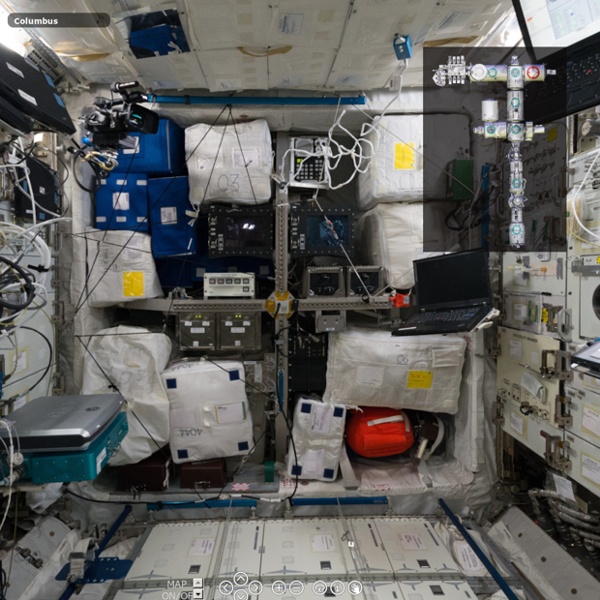



http://esamultimedia.esa.int/multimedia/virtual-tour-iss/
Related: Space • EspaceYour Age on Other Worlds Want to melt those years away? Travel to an outer planet! <div class="js-required"><hr> This Page requires a Javascript capable browser <hr></div> Educational video: The Sun for kids Hello friends and welcome to a new Happy Learning video. Today we are going to learn about the most important star in the universe, today we’re going to study the Sun. The sun is a star, an enormous sphere of extremely hot gas which is continuously shining and spinning around. It seems much bigger and brighter than other stars but that is only because our planet is close to it, more so than to any other star. The sun is in the center of our system and that’s why we call it the solar system and all the planets in it revolve around the sun.
PBS Space Time Have you ever asked “what is beyond the edge of the universe?” And have you ever been told that an infinite universe that has no edge? You were told wrong. In a sense. Mission Alpha launch to docking highlights Highlights of the launch and first day in space of ESA astronaut Thomas Pesquet on the Alpha mission. On 24 April at 11:08 (CEST) the Crew Dragon spacecraft with ESA astronaut Thomas Pesquet, NASA astronauts Megan McArthur and Shane Kimbrough, and JAXA (Japan Aerospace Exploration Agency) astronaut Akihiko Hoshide docked with the International Space Station’s Node-2 Harmony module, marking the start of ESA’s six-month mission Alpha. The crew spent around 23 hours orbiting Earth and catching up with the International Space Station after their launch on 23 April at 10:49 BST (11:49 CEST, 05:49 local time). The launch to docking went smoothly in Crew Dragon Endeavour
Forest of Science Вояджер не Покинул Солнечную Систему | Вояджер-2: первые данные из Межзвездного пространства Вояджер-1. Вояджер-2. Вояджер покинул солнечную систему? Espace : un amerrissage historique réussi pour des astronautes de l’ISS Publié le 02/05/2021 20:24 Article rédigé par La capsule Dragon a réussi son amerrissage de nuit et quatre astronautes sont de retour sur Terre après six mois dans la station spatiale internationale, dimanche 2 mai. Un exploit historique. Pulsar Sounds (Jodrell Bank Observatory) A pulsar is a highly magnetised neutron star, with a radius of 10-15 km, having somewhat greater mass than the Sun which has a radius of approximately 1 million km. Radiation is beamed out along the magnetic poles and pulses of radiation are received as the beam crosses the Earth, in the same manner as the beam from a lighthouse causes flashes. Being enormous cosmic flywheels with a tick attached, they make some of the best clocks known to mankind.
Espace : Thomas Pesquet a passé sept jours en orbite autour de la Terre Publié le 01/05/2021 12:54 Durée de la vidéo : 2 min. Article rédigé par L’astronaute Thomas Pesquet a retrouvé ses marques à bord de la Station spatiale internationale (ISS), où il réside depuis une semaine. "J'ai hâte de jouer au savant fou", a-t-il indiqué, vendredi 30 avril. World Magnetic Model Calculator Use the tool below to compute values for the geomagnetic field and secular variation for a given set of coordinates and date. This calculator uses the World Magnetic Model as released in Dec 2019. Choose the geodetic latitude and longitude either by entering the coordinates into the form below (decimal degrees may be entered into the 'degrees' field, and degrees S or W should be entered with a negative sign), or by simply clicking the location on the map. The altitude and date may be set using the appropriate form fields. Clicking on the 'Show result on map' button will display the values for the chosen coordinates in a pop-up window.
The Large Hadron Collider The Large Hadron Collider (LHC) is the world’s largest and most powerful particle accelerator. It first started up on 10 September 2008, and remains the latest addition to CERN’s accelerator complex. The LHC consists of a 27-kilometre ring of superconducting magnets with a number of accelerating structures to boost the energy of the particles along the way. Inside the accelerator, two high-energy particle beams travel at close to the speed of light before they are made to collide. YouTube: Роскосмос ТВ Новостная интернет-программа «Космическая среда» Телестудии Роскосмоса. Выпуск 270. В программе от 12 февраля 2020 года:- Послеполётная конференция командира корабля «Союз МС-13».- Запуск аппаратов OneWeb с Байконура.- «Физика плазмы в Солнечной системе»: конференция в ИКИ РАН.- Зонд Solar Orbiter передал первый сигнал из космоса. - Роскосмос и DLR. - Подготовка индийских космонавтов.- Одной строкой: Олег Скрипочка – командир МКС, Новый SIRIUS, «Электро-Л» сделал первый снимок, Снимки тёмной материи, Иран не вывел спутник. - Хронограф: 20 лет успешной работы «Фрегата».- Астрофотография недели: На орбите Полярного сияния, Млечный путь над Йеллоустоном, Вулкан Фудзи и туманности. Присылайте ваши фотографии и вопросы о космосе tv@tvroscosmos.ru Show less Новостная интернет-программа «Космическая среда» Телестудии Роскосмоса. Выпуск 270.
Online Model of Solar System